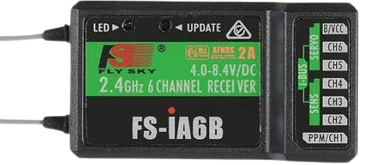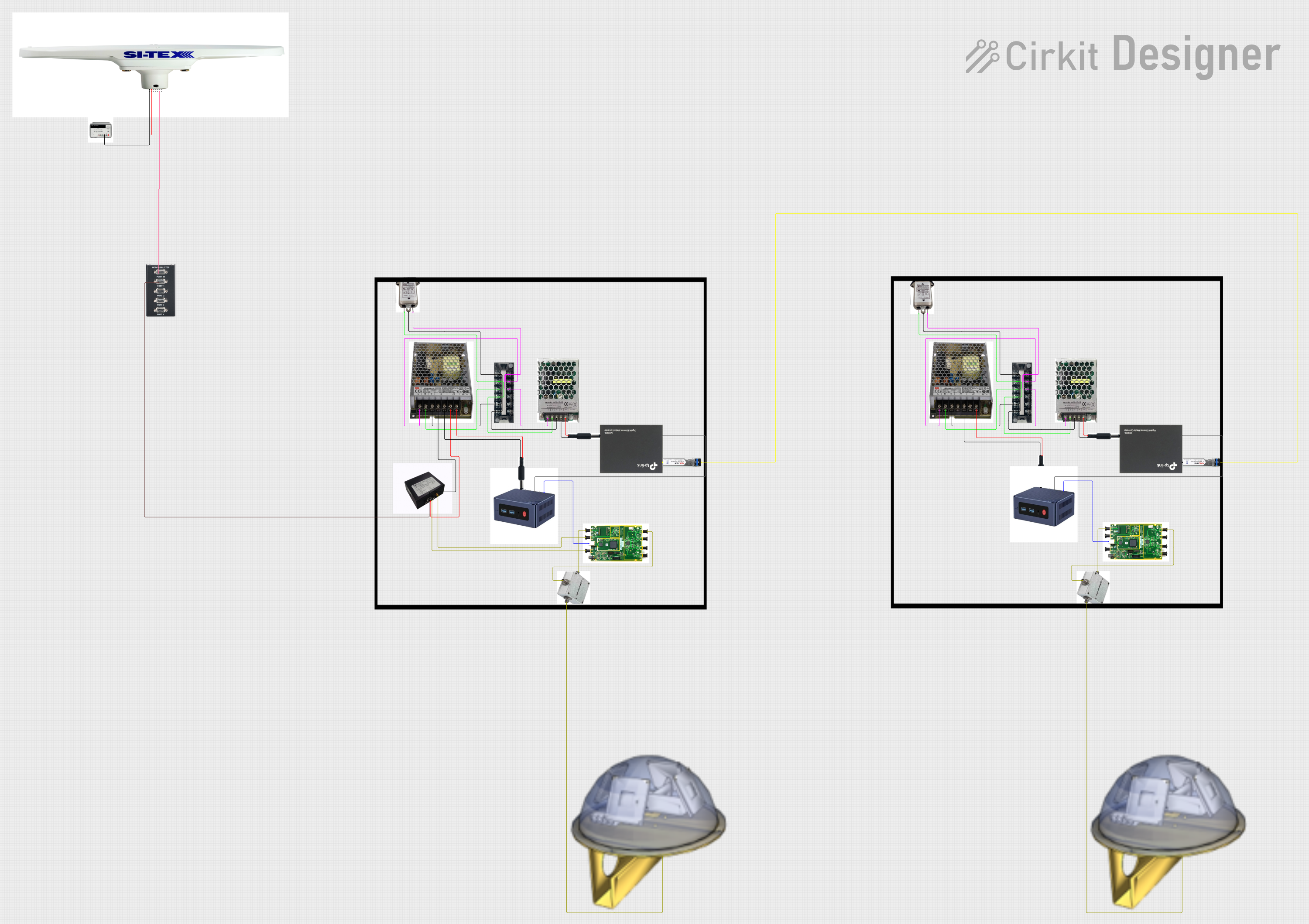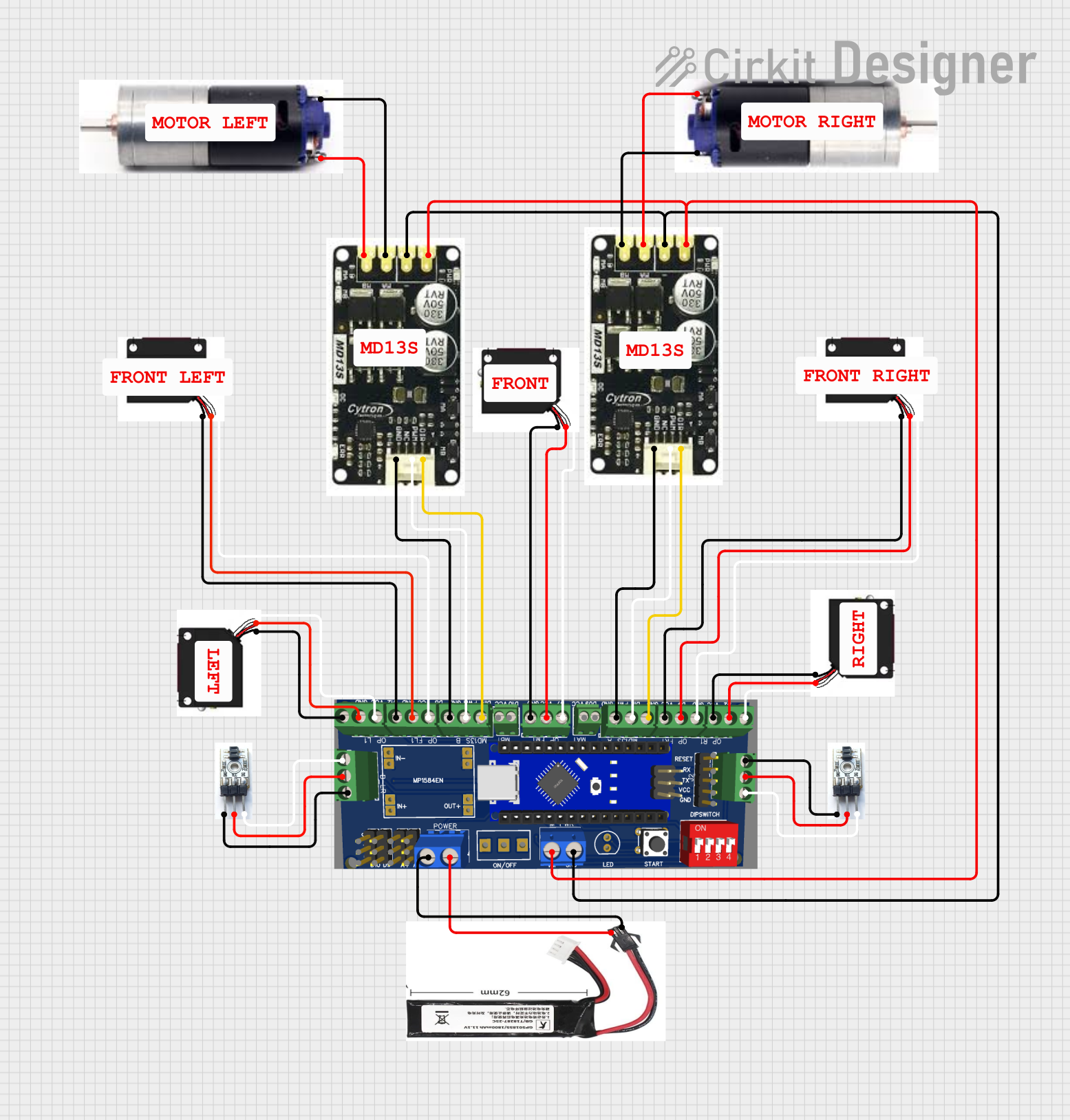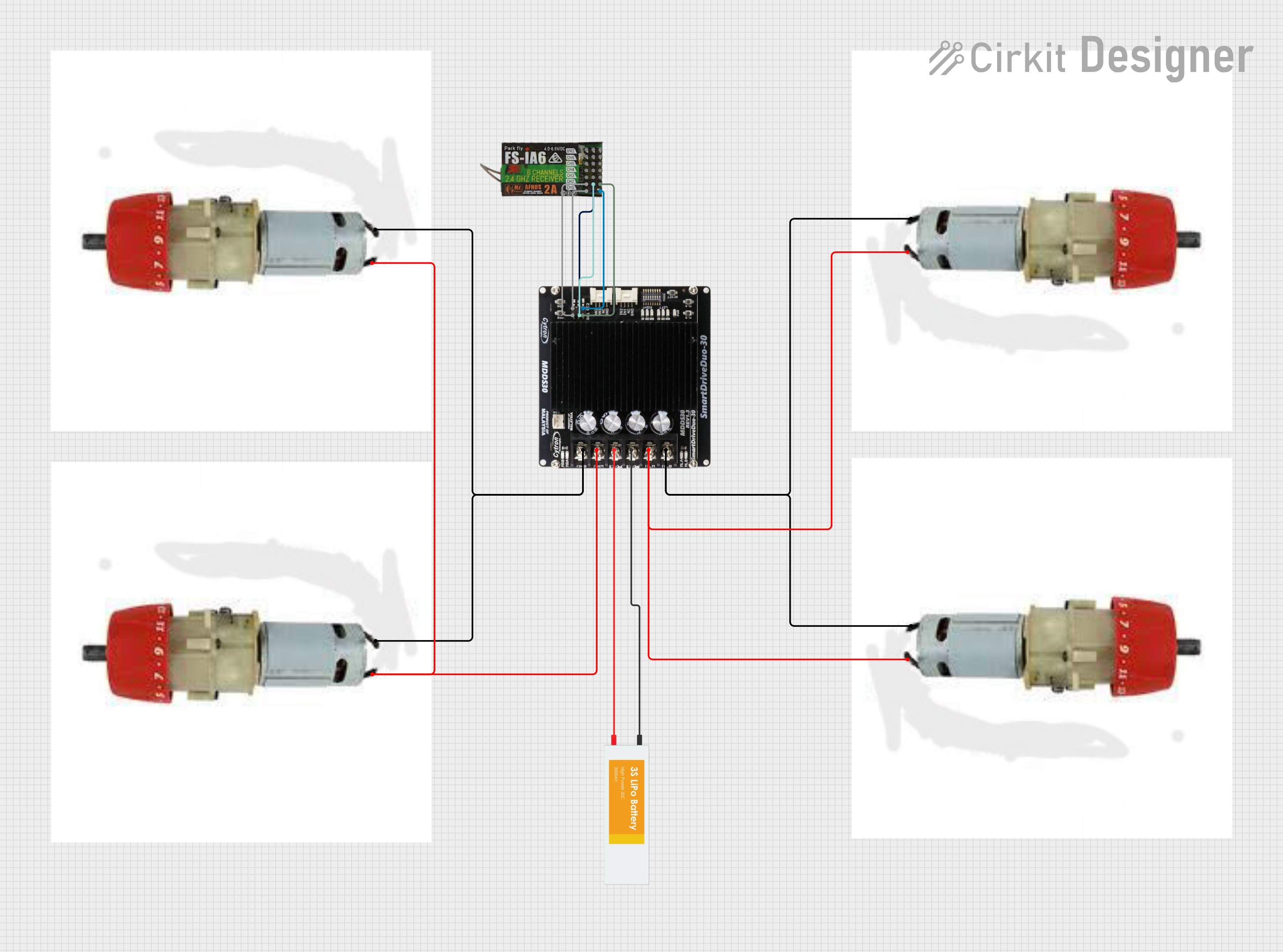
How to Use FS-iA6B : Examples, Pinouts, and Specs

 Design with FS-iA6B in Cirkit Designer
Design with FS-iA6B in Cirkit DesignerIntroduction
The FS-iA6B is a 6-channel receiver manufactured by FLYSKY, designed for use in remote control systems, particularly in model aircraft, drones, and other RC vehicles. Operating on the 2.4GHz frequency, it utilizes the AFHDS 2A (Automatic Frequency Hopping Digital System) protocol to ensure a reliable and interference-free connection. Known for its compact size, lightweight design, and robust performance, the FS-iA6B is a popular choice among hobbyists and professionals alike.
Explore Projects Built with FS-iA6B

 Open Project in Cirkit Designer
Open Project in Cirkit Designer
 Open Project in Cirkit Designer
Open Project in Cirkit Designer
 Open Project in Cirkit Designer
Open Project in Cirkit Designer
 Open Project in Cirkit Designer
Open Project in Cirkit DesignerExplore Projects Built with FS-iA6B

 Open Project in Cirkit Designer
Open Project in Cirkit Designer
 Open Project in Cirkit Designer
Open Project in Cirkit Designer
 Open Project in Cirkit Designer
Open Project in Cirkit Designer
 Open Project in Cirkit Designer
Open Project in Cirkit DesignerCommon Applications and Use Cases
- Remote-controlled aircraft, drones, and helicopters
- RC cars and boats
- Robotics and automation projects
- Educational and hobbyist RC systems
Technical Specifications
The FS-iA6B receiver is designed to deliver high performance and reliability. Below are its key technical specifications:
| Parameter | Specification |
|---|---|
| Frequency Range | 2.405 - 2.475 GHz |
| Modulation Type | GFSK (Gaussian Frequency Shift Keying) |
| Protocol | AFHDS 2A |
| Channels | 6 |
| Input Voltage Range | 4.0V - 6.5V |
| Antenna Type | Dual antenna for diversity reception |
| Dimensions | 47mm x 26.2mm x 15mm |
| Weight | 14.9g |
| Range | >500m (in open areas) |
| Compatibility | FLYSKY transmitters with AFHDS 2A |
Pin Configuration and Descriptions
The FS-iA6B receiver features multiple pins for connecting servos, ESCs, and other components. Below is the pin configuration:
| Pin Number | Label | Description |
|---|---|---|
| 1 | CH1 | Channel 1 signal output for servo or ESC |
| 2 | CH2 | Channel 2 signal output for servo or ESC |
| 3 | CH3 | Channel 3 signal output for servo or ESC |
| 4 | CH4 | Channel 4 signal output for servo or ESC |
| 5 | CH5 | Channel 5 signal output for auxiliary functions |
| 6 | CH6 | Channel 6 signal output for auxiliary functions |
| 7 | B/VCC | Power input (4.0V - 6.5V) and battery voltage monitoring |
| 8 | GND | Ground connection |
Usage Instructions
How to Use the FS-iA6B in a Circuit
- Powering the Receiver: Connect a power source (4.0V - 6.5V) to the B/VCC and GND pins. This is typically provided by an ESC with a built-in BEC or a standalone BEC.
- Binding the Receiver:
- Insert the binding plug into the B/VCC port.
- Power on the receiver while holding the bind button on your transmitter.
- The LED on the receiver will flash, indicating it is in binding mode.
- Once the LED stops flashing and remains solid, the binding process is complete.
- Connecting Servos/ESCs: Attach servos or ESC signal wires to the appropriate channel pins (CH1-CH6) based on your transmitter configuration.
- Antenna Placement: Ensure the dual antennas are positioned at 90-degree angles to each other for optimal signal reception.
Important Considerations and Best Practices
- Antenna Orientation: Keep the antennas away from metal parts or carbon fiber to avoid signal interference.
- Voltage Monitoring: Use the B/VCC pin to monitor battery voltage if supported by your transmitter.
- Failsafe Configuration: Set up failsafe settings on your transmitter to ensure safe operation in case of signal loss.
- Range Testing: Perform a range test before each use to ensure the receiver is functioning correctly.
Example: Using FS-iA6B with Arduino UNO
The FS-iA6B can be connected to an Arduino UNO for custom RC projects. Below is an example code snippet to read PWM signals from the receiver:
// Example code to read PWM signals from FS-iA6B receiver using Arduino UNO
// Connect CH1 of the receiver to pin 2 of the Arduino UNO
const int receiverPin = 2; // Pin connected to CH1 of FS-iA6B
volatile unsigned long pulseStart = 0;
volatile unsigned long pulseWidth = 0;
void setup() {
pinMode(receiverPin, INPUT); // Set receiver pin as input
Serial.begin(9600); // Initialize serial communication
attachInterrupt(digitalPinToInterrupt(receiverPin), readPulse, CHANGE);
}
void loop() {
// Print the pulse width (PWM signal) to the Serial Monitor
Serial.print("Pulse Width: ");
Serial.print(pulseWidth);
Serial.println(" us");
delay(100); // Delay for readability
}
void readPulse() {
if (digitalRead(receiverPin) == HIGH) {
// Record the time when the pulse starts
pulseStart = micros();
} else {
// Calculate the pulse width when the pulse ends
pulseWidth = micros() - pulseStart;
}
}
Troubleshooting and FAQs
Common Issues and Solutions
Receiver Not Binding:
- Ensure the binding plug is correctly inserted into the B/VCC port.
- Verify that the transmitter is in binding mode and compatible with AFHDS 2A.
- Check the power supply to the receiver.
No Signal Output:
- Confirm that the receiver is bound to the transmitter.
- Verify the connections between the receiver and servos/ESCs.
- Ensure the transmitter is configured correctly for the assigned channels.
Short Range or Signal Loss:
- Check the antenna placement and ensure it is not obstructed.
- Perform a range test to identify potential interference sources.
- Replace the receiver if the issue persists.
LED Not Lighting Up:
- Verify the power supply voltage (4.0V - 6.5V).
- Check for loose or damaged connections.
FAQs
Q: Can the FS-iA6B be used with non-FLYSKY transmitters?
A: No, the FS-iA6B is only compatible with FLYSKY transmitters that support the AFHDS 2A protocol.
Q: How do I enable failsafe on the FS-iA6B?
A: Failsafe settings are configured through the transmitter. Refer to your transmitter's manual for detailed instructions.
Q: What is the maximum range of the FS-iA6B?
A: The receiver has a range of over 500 meters in open areas, depending on environmental conditions and antenna placement.
Q: Can I use the FS-iA6B for telemetry?
A: Yes, the FS-iA6B supports telemetry when paired with a compatible FLYSKY transmitter.